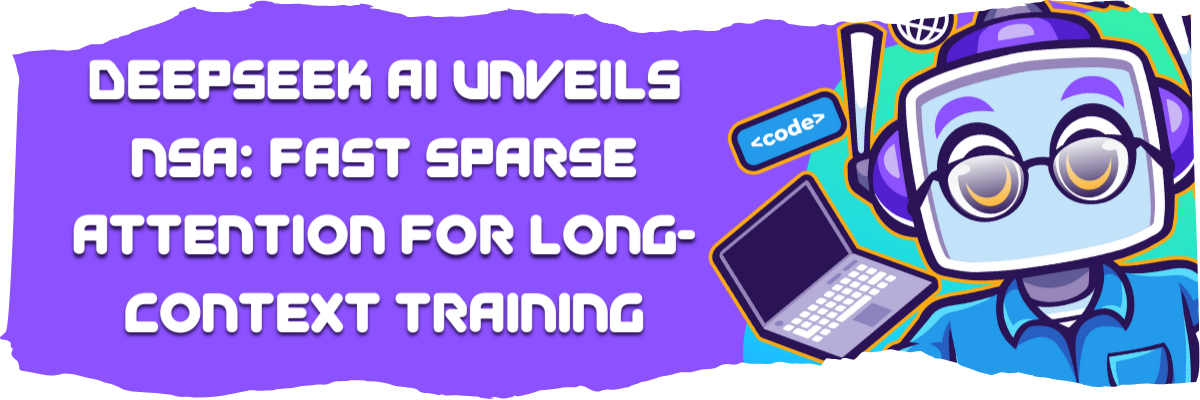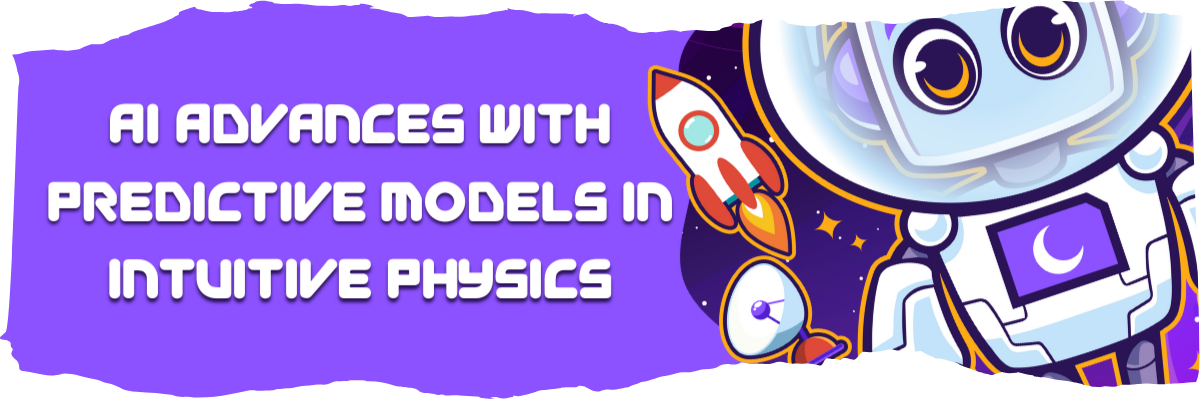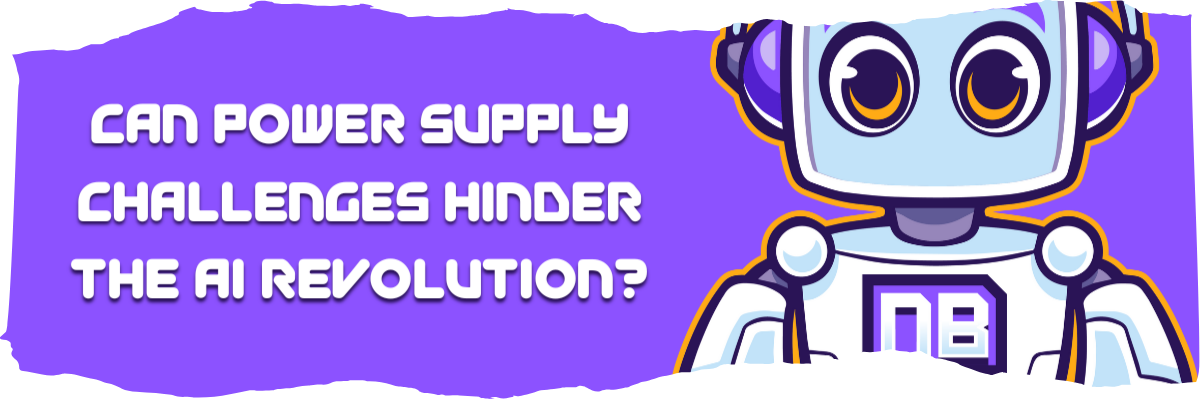AI News Recap: February 21, 2025
AI Titans Clash: Musk's Rejected Bid, Sutskever's Billion-Dollar Vision, and the Rise of Thinking Machines
It’s that time again—your weekly AI update is here!
Hope you're doing well. As always, your recap of this week’s AI developments, industry news, and breakthroughs are below. Enjoy your day — and weekend!
🕖 Short on time? - A TL;DR section has been provided for you at the end of this post.
⚠️ Note(s)
I'm experimenting with different news sources to find the right balance between relevance and technical depth, ensuring you get the most interesting and important topics.
Your Weekly Recap
OpenAI Board Unanimously Rejects Elon Musk's Bid
Ilya Sutskever's AI Startup Nears $1B Funding for Safe Superintelligence
Musk Staffer Develops DOGE AI to Improve Government Efficiency
DeepSeek AI Unveils NSA: Fast Sparse Attention for Long-Context Training
Mira Murati Unveils Thinking Machines Lab: A New AI Contender
From Generative to Reliable AI: High Stakes in Manufacturing
AI Advances with Predictive Models in Intuitive Physics
This Week in AI: Why Ignoring Benchmarks Might Be Wise
Microsoft Unveils Magma: AI Model Merging Vision, Language, and Action for Robotics
Can Power Supply Challenges Hinder the AI Revolution?
OpenAI Board Unanimously Rejects Elon Musk's Bid
Published: 2025-02-14
Key Points
OpenAI's board unanimously rejected Elon Musk's $97.4 billion bid to buy the nonprofit.
The board stated Musk's bid aimed to disrupt competition and was not in OpenAI's mission interest.
OpenAI is transitioning to a public benefit corporation, opposed by Musk's lawsuit.
Source(s)
Ilya Sutskever's AI Startup Nears $1B Funding for Safe Superintelligence
Published: 2025-02-18
Key Points
Safe Superintelligence, founded by Ilya Sutskever, is nearing a $1 billion funding round led by Greenoaks Capital Partners.
The startup's valuation is expected to reach $30 billion, surpassing previous estimates.
Safe Superintelligence has raised funds from major investors like Sequoia Capital and Andreessen Horowitz but isn't generating revenue yet.
Source(s)
Musk Staffer Develops DOGE AI to Improve Government Efficiency
Published: 2025-02-18
Key Points
A Musk staffer created an AI chatbot for the Department of Government Efficiency to reduce waste.
The chatbot, powered by xAI, focuses on making government processes more efficient.
Concerns exist about potential conflicts of interest and the chatbot's accuracy.
Source(s)
DeepSeek AI Unveils NSA: Fast Sparse Attention for Long-Context Training
Published: 2025-02-19
Key Points
DeepSeek AI introduces NSA, a sparse attention mechanism for efficient long-context training and inference.
NSA uses compression, selection, and sliding window strategies to balance performance and efficiency.
Optimized for modern GPUs, NSA achieves significant speedups in processing long sequences.
Source(s)
Mira Murati Unveils Thinking Machines Lab: A New AI Contender
Published: 2025-02-19
Key Points
Mira Murati launches Thinking Machines Lab, a new AI company focused on human collaboration and adaptability.
The company emphasizes open science, transparency, and making AI advancements accessible to the scientific community.
Thinking Machines Lab aims to compete with AI giants like OpenAI and Anthropic by prioritizing customizable and reliable AI systems.
Source(s)
From Generative to Reliable AI: High Stakes in Manufacturing
Published: 2025-02-19
Key Points
Manufacturing industry showcases successful use of reliable AI, moving beyond generative AI hype.
AI-powered predictive maintenance in manufacturing yields significant ROI and operational improvements.
Manufacturers increase AI budgets as they quantify AI's impact on supply chain and process optimization.
Source(s)
AI Advances with Predictive Models in Intuitive Physics
Published: 2025-02-19
Key Points
AI struggles with intuitive physics, unlike humans who have innate understanding.
V-JEPA model predicts masked video regions, showing improved intuitive physics understanding.
Study suggests abstract prediction models enhance AI's physical reasoning abilities.
Source(s)
This Week in AI: Why Ignoring Benchmarks Might Be Wise
Published: 2025-02-19
Key Points
Elon Musk's xAI released Grok 3, outperforming other models in benchmarks for mathematics and programming.
AI benchmarks often fail to reflect practical proficiency, prompting calls for better testing standards.
Experts suggest aligning AI benchmarks with economic impact and utility for greater relevance.
Source(s)
Microsoft Unveils Magma: AI Model Merging Vision, Language, and Action for Robotics
Published: 2025-02-20
Key Points
Magma is a multimodal AI model integrating vision, language, and action for seamless digital and physical environment interaction.
It uses Set-of-Mark and Trace-of-Mark techniques for improved object labeling and tracking.
Magma outperforms existing models in UI navigation, robotic manipulation, and multimodal understanding tasks.
Source(s)
Can Power Supply Challenges Hinder the AI Revolution?
Published: 2025-02-20
Key Points
Generative AI is driving significant power demand, potentially using 75% of U.S. data center capacity by 2025.
Data center power consumption could rise to 7.5% of U.S. electricity by 2030, straining power grids.
Current efficiency improvements may not keep up with the rapidly increasing power needs of AI technologies.
Source(s)
TL;DR
Here’s a summary of the main points from all the articles …
OpenAI & Elon Musk:
OpenAI’s board rejected Elon Musk’s $97.4 billion bid due to competition concerns.
The company is transitioning to a public benefit corporation, despite Musk’s legal opposition.
Ilya Sutskever’s Safe Superintelligence:
Nearing a $1 billion funding round, valuing the company at $30 billion.
DOGE AI Chatbot & xAI:
A Musk-affiliated staffer launched an AI chatbot powered by xAI.
Aims to enhance government efficiency but faces conflict-of-interest concerns.
DeepSeek AI & NSA:
Introduced a fast sparse attention mechanism for long-context AI training.
Thinking Machines Lab:
Launched by Mira Murati, focusing on transparent and adaptable AI systems.
AI in Manufacturing:
Predictive maintenance improves reliability and ROI.
Advancements in AI Models:
V-JEPA model: Enhances AI’s understanding of intuitive physics.
Grok 3 by xAI: Excels in benchmarks, though real-world relevance is debated.
Microsoft’s Magma model: Integrates vision, language, and action for robotics.
AI & Energy Consumption:
AI power demand could reach 7.5% of U.S. electricity usage by 2030, raising grid capacity concerns.
This content is curated and compiled autonomously using a Python-driven AI system. While every effort is made to ensure accuracy, we welcome your feedback on any discrepancies you may notice.













